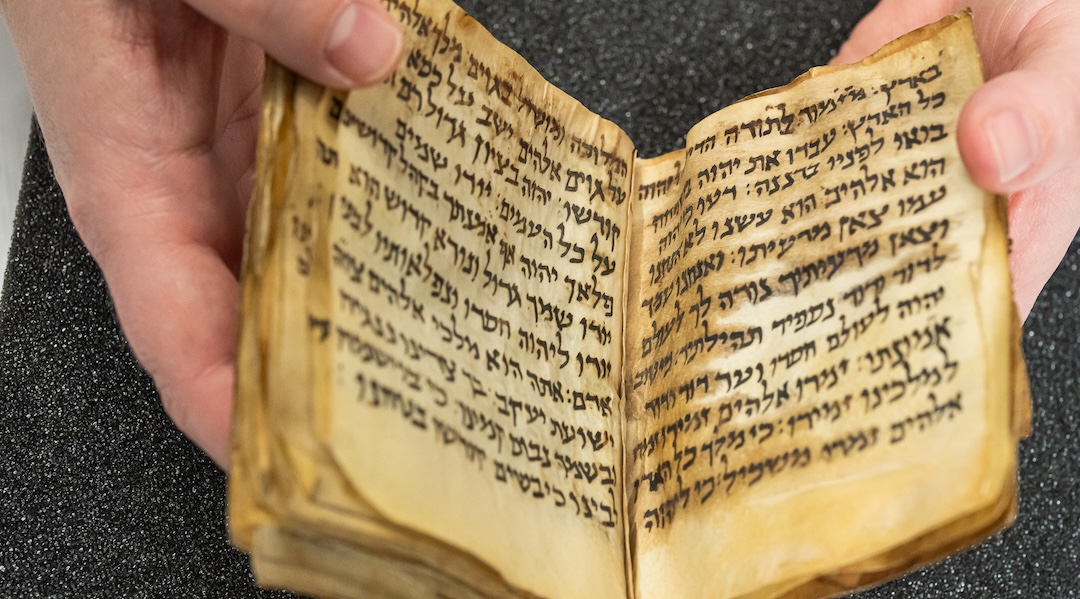Unearthing Ancient Faith: Museum of the Bible Reveals World’s Oldest Jewish Book Found on the Silk Road

A recently unveiled exhibit at the Museum of the Bible in Washington, D.C., is shining a spotlight on an extraordinary discovery: the Afghan Liturgical Quire (ALQ), believed to be the world’s oldest Jewish book. Unearthed in the rugged terrain of Afghanistan along the historic Silk Road trading route, this ancient text has captivated historians, religious scholars, and visitors alike with its remarkable journey through time.

The compact five-inch by five-inch manuscript, which dates back roughly 1,300 years, offers a precious glimpse into the spiritual life of Jewish communities in medieval Afghanistan. It contains Sabbath morning prayers, sacred poems tied to the Old Testament, and what experts believe to be the oldest partial version of the Haggadah, a liturgy central to the Seder meal during Passover. This monumental discovery is now the centerpiece of the museum’s exhibit, “Sacred Words: Revealing the Earliest Hebrew Book,” which runs until January.
The ALQ’s discovery is nothing short of miraculous. First uncovered in a cave by a member of the Hazara people, a minority group in the mountainous regions of Afghanistan, the book remained hidden from the world for centuries. Its significance, however, came to light in 1997 when it was brought to the attention of historians. For years, the Hazara people protected this treasure, only revealing its existence after the turn of the millennium. The manuscript’s survival, despite the volatile and war-torn history of Afghanistan, speaks volumes about the resilience of its caretakers.
In 2013, the Green family, known for their ownership of Hobby Lobby and their involvement in the founding of the Museum of the Bible, purchased the ALQ from an Israeli dealer. Initially mislabeled as an Egyptian artifact from the 900s CE, it took years of scholarly investigation to unlock the manuscript’s true origins. Through painstaking research, experts traced it back to the Jewish communities along the Silk Road—a bustling network that connected the East and West, facilitating not only trade but the exchange of ideas, cultures, and faith.
Bobby Duke, interim chief curatorial officer for the museum, expressed the profound significance of the ALQ. “It clarifies our understanding of the Bible’s journey along the Silk Roads and shines a light on the diverse religious, ethnic, and cultural tapestry of Afghanistan throughout most of its history,” he explained. The exhibit showcases the interconnectedness of the ancient world, where Jewish, Christian, and Muslim communities coexisted and thrived along this famous trade route.
What makes the ALQ even more extraordinary is the collaboration behind its preservation. A coalition of Christians, Jews, and Muslims worked together to rescue this sacred relic, highlighting the shared reverence for religious artifacts that transcend faith boundaries. Hershel Hepler, the museum’s associate curator of Hebrew manuscripts, emphasized the global importance of the discovery. “The ALQ joins this international ensemble of great Hebrew books, revered for their religious and cultural significance and the stories of their survival,” he noted.
The Afghan Jewish Foundation has also recognized the ALQ as a symbol of spiritual unity. In a heartfelt statement, they declared, “The ALQ manuscript is indeed a gift from God to all peoples of all faiths.” The manuscript, long hidden in obscurity, is now celebrated as a testament to the endurance of faith across time and space.
This ancient book’s journey from the caves of Afghanistan to the halls of the Museum of the Bible is a tale that intertwines history, faith, and perseverance. Visitors to the exhibit are not only given the opportunity to view the world’s oldest Jewish book but to also reflect on the profound legacy it represents. The ALQ reminds us that sacred words, written millennia ago, continue to inspire and connect people of all beliefs, forging a bridge between past and present.
As the exhibit draws to a close in January, the story of the Afghan Liturgical Quire will remain etched in history as one of the most remarkable archeological finds of our time—a discovery that affirms the enduring power of faith and the shared heritage of humanity.




